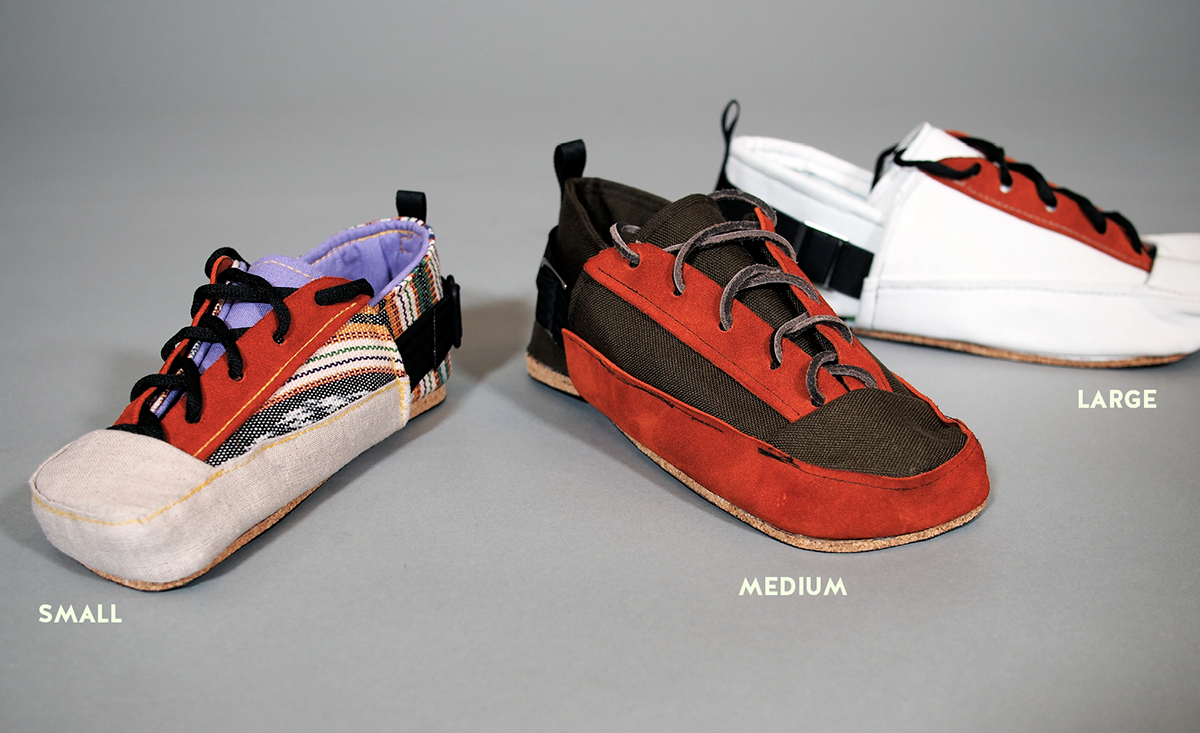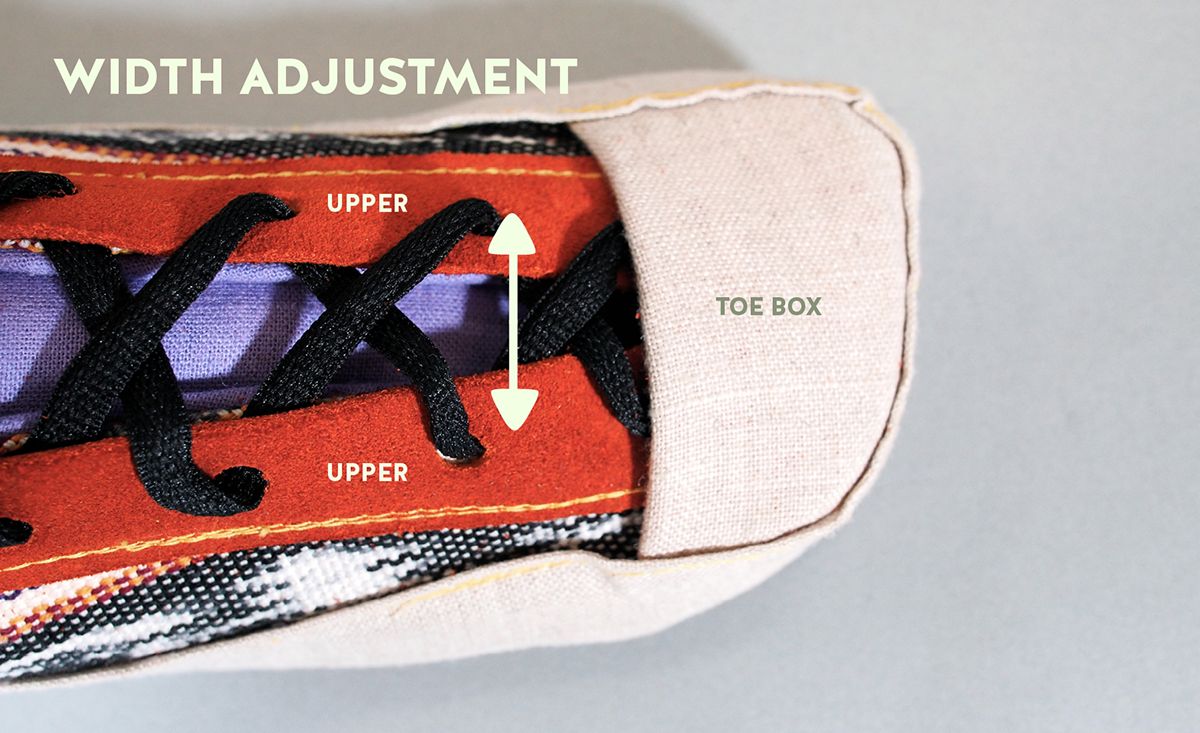CHALLENGE
For the poorest in the world: the lack of shoe ownership can be a sign of extreme poverty. But even for the wealthy: most shoe brands have at least 14 shoe sizes which can make it very difficult and expensive to find the right shoe.
SOLUTION
Shoes are not well shaped or sized to our feet and custom shoes are expensive. The solution is to make a shoe that comes in 3 sizes and naturally mimics the shape of each person's foot. This kind of shoe can be mass produced to be much cheaper than traditional shoes while also providing a healthier fit for our feet.
GOAL
This shoe design was completed as an intensive case study and application of my master's thesis. The goal was to create a shoe that both the poorest and richest people in the world would value and benefit from.

Why have 28 different shoe sizes to fit adult men and women when we can just have 3?

The shoe adjusts to the length of your foot using a simple strap and buckle. Set it once and foget it.

The width is adjusted like a traditional shoe using laces. However, the uppers are not sewn into the toe box to allow for far greater adjustability.

The very minimal heel of the shoe allows the foot to natrually lay flat in the shoe. The flexible cork also allows the 26 bones and 33 joints in the foot to move and behave more natrually.

DESIGN PROCESS
Learn more about my design process and watch me present my project:
FOOT STUDY
Length & Width Measurements
Largest Male Foot - 11.8" x 4.7"
Smallest Female Foot - 8.6" x 3.3"
Shoes Sizes
Largest Male foot - Size 13 Male
Smallest Female foot - Size 5.5 Female
Total Variance
Length varied from 8.6"-11.8" for a total difference of 3.2"
Width varied form 3.3"-4.7" for a total difference of 1.4"
This range of length and width is accommodated by 20 different shoe sizes



SIGNIFICANT OBSERVATIONS
There is no such thing as normal. No one's foot shape is quite the same. Almost everyone's foot has a unique shape and size. There doesn't seem to be anything that we can call a "normal" foot shape out of this batch of 62 feet.
Feet are not in a locked ratio. Some feet are long and narrow, others are short and wide. Our feet don't stick to a rigid ratio between length and width. However, if you look at our shoes, they tend to ignore this basic fact.
The difference in length is much greater than the difference in width. Out of the batch of 62 feet, the difference of feet width is about 60% less than the difference in feet length. This means that shoes need to adjust more for length than for width.
Women's feet overlap with Men's. There is a significant range where the men's smallest feet overlap with the women's largest feet. However, in general, women's feet are much smaller than men's.
PROTOTYPE EVOLUTION
CONSTRUCTION PROCESS

DESIGN OUTCOME
Learn more about why I decided to re-design shoes:




